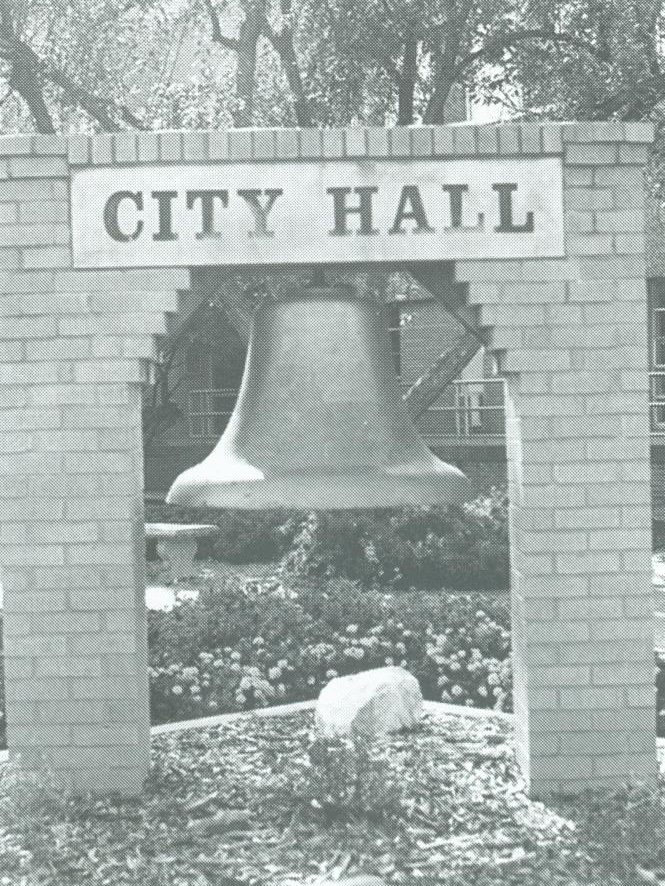Although Pekin voted to incorporate as a city in 1849, Pekin had no literal “city hall” for the first 35 years of its history. The establishment of a permanent city hall is a story of the triumph of principle over privilege.
In its review of Pekin’s history during the middle to latter 1800s, the 1949 Pekin Centenary says:
“Politics in city government was often the politics of privilege. When a new administration took office, it was customary for a complete turnover of city jobs to be made forthwith, and not only of city jobs but of all the city’s business. This was generally transferred to the business houses of the aldermen, and in some occasions when no alderman happened to be in the particular business of which the city required service, one of them got into that business temporarily.”
This was popularly known as the “spoils system” (“To the victor belongs the spoils”). Then as now, there were calls for ethics reform in politics, but in those days most people casually accepted that the winner of an election, or the party in power, was entitled to appoint friends and cronies to key offices and to channel government work to political allies (practices still to be found today in America at local, state, and federal levels, despite attempted reforms).
In Pekin, one of the results of the spoils system was the lack of a permanent city hall. “The mayor traditionally controlled the location of the police headquarters and other city offices, there being no city hall, and this was customarily on property owned by the mayor for which he proceeded to collect rents from the city,” says the 1949 Centenary.
By the 1870s, however, moves were made to set up a city hall. In 1874, the city council directed that all revenue from saloon licenses would be set aside for the “purchase or erection of a city hall, calaboose and engine house.”
It was another decade before Pekin got its first city hall. Like many other of Pekin’s improvements and advances, that took place under the administration of Mayor Thomas Cooper (1830-1914).
“Under Cooper, the first sewer was installed, the first curbs and gutters built, street signs were erected, and brick sidewalks were introduced,” says the 1974 Pekin Sesquicentennial, which continues a little further on, “But the crowning achievement of Cooper’s administration was the construction of the community’s first City Hall. That structure, which was built on the site of the present City Hall, was completed in 1884 at a cost of $6,500. It housed the city offices, council chambers, fire department, and police department. No bonds were issued; apparently the saloon license fund which had been set aside for that purpose was sufficient.”

Pekin’s first city hall, at 400 Margaret Street, served the community for the next 67 years. By that time, Pekin was overdue for a newer and larger structure. The next city hall was erected in 1951 at a cost of $330,000.
“The current building was constructed around the old one, and City Clerk Bill Jansen recalls handing records, etc., through the windows of the old building into the new,” the 1974 Sesquicentennial says. The last city council meeting in the old city hall took place on 15 Sept. 1951, after which the old building was torn down. On 27 June 1952, a time capsule was sealed in the cornerstone of the new city hall, and the Sesquicentennial comments that one of the items in the cornerstone was a bottle of Bourbon Supreme from Pekin’s former American Distilling Co. The contents of that time capsule are stored at the current Pekin Municipal Building, along with the items that were stored in the 1884 city hall’s time capsule.



Pekin’s second city hall was used for government business for only 52 years. In 2002-2004, the city government erected a new 32,000-square-foot municipal building at 111 South Capitol Street. The administration and city departments moved to the new city hall in October 2004.
This time, however, the old city hall was not demolished. Instead, it was sold in three parts. As “Pekin: A Pictorial History” (2004) says, “The building now is the home of Enviro-Safe, the Court Street building houses an Antique Shop and the parking lot on Margaret Street was purchased and a new construction built by O’Reilly’s Auto Parts.”
Now during Pekin’s Bicentennial Year, the city is making plans for the opening of a time capsule that was originally buried in the lawn outside of the 1951 city hall on 1 Jan. 1977 during a ceremony that marked the conclusion of Pekin’s celebration of the U.S. Bicentennial in 1976. Presiding over the ceremony were Pekin Mayor William Waldmeier (1926-2013) and Chuck Wolfe (1931-2013), president of the Pekin Chamber of Commerce. The 1977 time capsule was placed with plans to open it on the Fourth of July during Pekin’s celebration of its own bicentennial (though the city will unearth the capsule on Friday, May 30). When the current city hall was built about two decades ago, the 1977 time capsule was unearthed and the reinterred in the lawn of the Pekin Municipal Building on Capitol Street. The city hall time capsule will be opened on Thursday, 4 July 2024.















